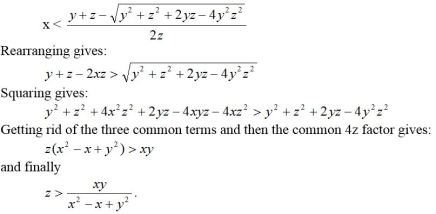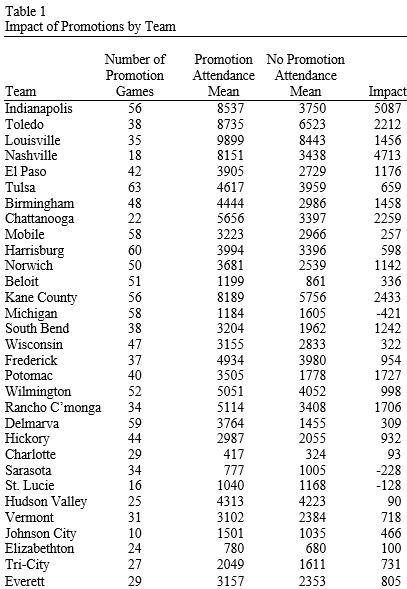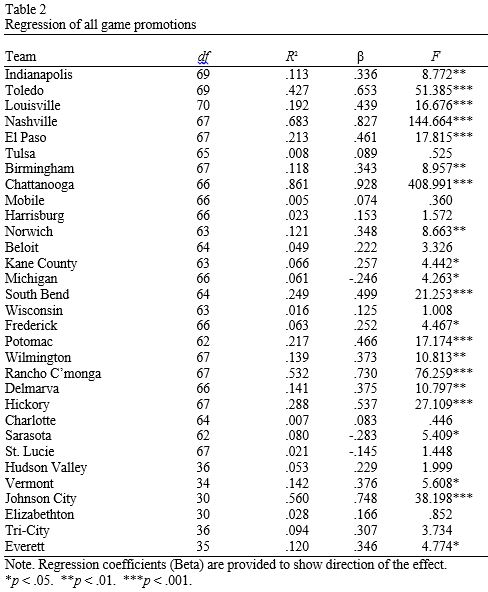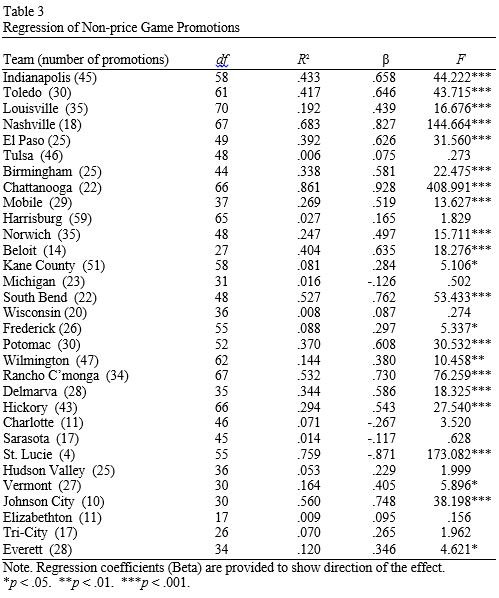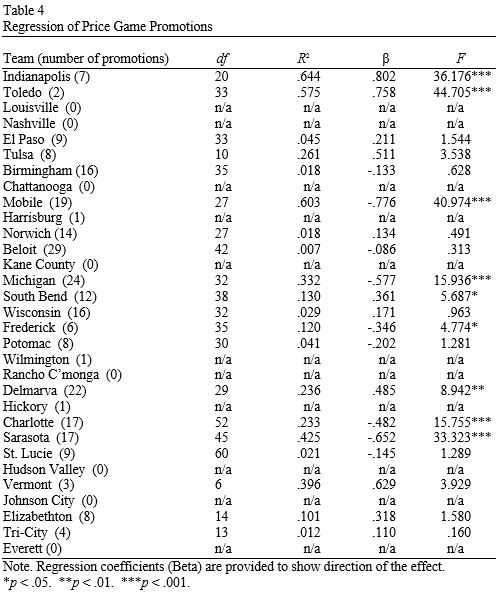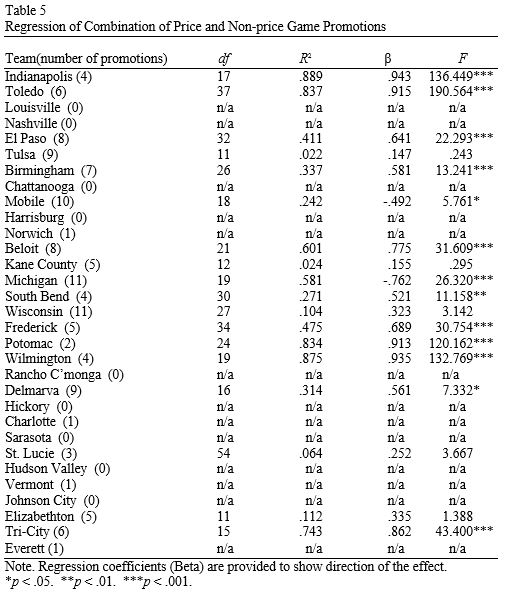Sponsorship Management: A Status Report
ABSTRACT
Based on the experiences and knowledge of a sport marketing university professor and the CEO of a sport marketing firm, this paper provides a hands-on status report on sponsorship management. It provides a contemporary view of sponsorship theory and practice in an effort to provide readers with a view on sponsorship as it functions both in terms of its use by practitioners and its significance in management theory.
Introduction to Sponsorship
Sponsorship, a relatively recent promotional tactic is where a “corporation [or other investor] creates a link with an outside issue or event, hoping to influence the audience by the connection” (Rifon, Choi, Trimble & Li, 2004). This ‘link’ or ‘association’ with a specific property (known as the ‘sponsee’) is the key in differentiating sponsorship from other promotional strategies, as it enables the investor (known as the ‘sponsor’) to not only receive the related promotional benefits (TV/print exposure, branding opportunity, etc.) but to be associated, in the minds of consumers, with the sponsee. For example, Lachowetz & Irwin (2003), in their survey of 500 spectators at the 2000 FedEx St. Jude Classic golf tournament, found evidence suggesting that spectator response to the sponsor (FedEx) is influenced by their affinity for the cause which the tournament benefits (St. Jude’s Children’s Research Hospital).
In terms of industry size, global investment in sponsorship has progressed from approximately US$500 million in 1982 (Kuzma & Shanklin, 1994) to US$24.4 billion in 2002 (Kolah, 2003) to an estimated US$28 billion in 2004 (IEG, 2004). This torrid and recent growth is forecasted to continue into the future (Kolah, 2003). In terms of its contribution to promotional spending, sponsorship has increased in importance from 2.5% in 1987 to an estimated 5.8% in 2001 (IEG, 2000) suggesting that sponsorship has become an integral part of the promotional mix. A number of academic studies (i.e. Cunningham and Taylor, 1995; Meenaghan, 1991) support this
In a similar fashion to the American Marketing Association’s recent update of its widely-accepted definition of marketing to focus on relationships, sponsorship is viewed in current management thinking as a relationship. Akin to other promotional strategies, sponsorship also enables a sponsor to efficiently reach its target market (e.g. Rodgers, 2003), making sponsorship important to sponsors, sponsees and affiliated entities such as a benefiting charity, a sponsorship sales agent, an event manager or a facility provider. Its importance stems from a few major factors. First, a major challenge in developing advertising strategies involves navigating the increasingly cluttered advertising space that exists today (Arthur, 1998). Faced with the challenge of this clutter, it is no longer enough for many organizations to promote themselves through advertising alone and sponsorship may provide an efficient way by which to differentiate a sponsor from its competitors (Fahy et al., 2004; Amis, Slack & Berrett, 1999). Second, evidence of the attractiveness of sponsorship relative to other promotional tools is demonstrated by sponsors who have supported their initial sponsorship investment with additional funds to leverage that investment. Leveraging, used in this context, refers to strategies that the sponsor funds and implements to increase the effectiveness of the sponsorship. These techniques are varied and include such things as the title sponsor of a televised event developing commercials and paying for their diffusion leading up to, during, and following the event. Reebok, for example, recently increased its annual budget to leverage its sponsorship investments to US$12.6 million (Kolah, 2003), which means that the organization spends over $12 million annually to leverage its sponsorship investments.
Mandate
The objective of this paper is to position and support sponsorship as a promotional activity from the planning stages through to its activation. It will be shown to be distinct from other promotional strategies (e.g. advertising, public relations, and sales promotions) and to be distinct from philanthropy including capital campaigns (major gifts). Philanthropy refers here to any fund-raising effort that seeks donations (i.e. a gift of a contribution where the donor requires nothing in return). Further, the need for both sponsors and sponsees to incorporate sponsorship-specific initiatives and resources into their promotional budgets will be demonstrated. In order to accomplish this mandate, the authors will draw on their own experiences, knowledge and research.
It is the authors’ hope that this paper will demonstrate to the decision-makers in organizations (both sponsors and sponsees) that sponsorship is not a form of corporate donation but a two-way marketing relationship where cash or in-kind resources are exchanged for promotional value. For the sponsorship relationship to be successful, the sponsorship must be properly leveraged by the sponsor and serviced by the sponsee, with an accompanying leveraging program. By means of contrast, major gifts are not recognized as providing promotional value as evidenced in the reasons in the elements of attraction of gift giving (Martinis, 2005), inferring that they are not sponsorship.
The white paper is organized in four sub-sections. First, a brief description of sponsorship and its nuances is described, with particular emphasis on current sponsorship practice. Second, a brief review of current management theory will be presented to support sponsorship’s position in management practice. Included in this section will be a short review of the sponsorship industry. Third, supporting evidence from the authors’ professional experiences will be provided. Finally, a summary paragraph will present the authors’ concluding policy statement.
Sponsorship Practice
In contemporary business practice, corporations invest in sponsorship; they no longer have the excess marketing funds or open leeway to simply undertake goodwill gestures. This evolution and maturation of sponsorship into a key strategic element of the marketing mix has led to a high level of practitioner need for cost-effective, accurate and reliable sponsorship evaluation methodologies as the greatest challenge facing practitioners is clearly the demonstration of sponsorship effectiveness. In response to this need, researchers are working to fill that gap.
As corporations (sponsors) and their agencies spend more time analyzing and assessing the business performance of their sponsorship investments and related leveraging activities, the properties (sponsees) they work with must be prepared to respond by effectively servicing the sponsorship. This response is being demanded in terms of increased media value, stronger integration of the sponsor’s brands with the property, and via more highly leveraged activation programs. It has become clear that, in order to insure the long-term success of the overall sponsorship, the sponsee must properly service the current needs of the sponsor by ensuring that its internal sponsorship management resources are appropriately structured. Such structure needs to include units within the organization that specialize in sponsorship sales, sponsorship activation and sponsor servicing. If the sponsee is to continue to generate the resources (cash and/or in-kind products/services) and brand association that comes with successful long-term sponsorship relationships, all three of these units must be in place.
The demands placed on a property’s sponsorship sales department are driving them to become even more integrated with the other functions in the organization. This has become even more pronounced as sponsors move from simply buying an affiliation or media spots through a property and are now interested in creating brand activations. The concept of brand activation is defined as consumer connectivity, and therefore the sponsorship program needs to be integrated with the departments that most touch the consumer.
Global Sponsorship Values (Source: IEG, 2003)
| Territory | Predictions for sponsorship in 2003 (US$ billions) | Percentage growth (over 2002) |
| North America | $10.5 | 9.1% |
| Central and South America | $2.2 | 4.8% |
| Europe | $7.4 | 4.2% |
| Pacific Rim | $4.7 | 9.3% |
| Other | $1.4 | 7.6% |
Of specific note within these stats is sponsorship’s contribution to global promotional spending, which has increased in importance from 2.5% in 1987 to an estimated 5.8% in 2001 (IEG, 2000). This suggests that sponsorship has become an integral part of the promotional mix and is supported by a number of studies (e.g. Meenaghan, 1991). In practice, sponsorship has clearly become an important revenue source for sponsees and a valuable promotional strategy to sponsors in many industries. The literature now positions sponsorship to be completely different that other promotional strategies given three main points of difference: (i) that sponsors are believed by consumers to be ‘part of the program’ [due to the association effect], (ii) that sponsorship and advertising function differently [i.e. the process by which the promotion is communicated], and (iii) that sponsorship is believed by consumers to benefit a broader audience.
Examples from Practice
The authors deal on a professional basis across Canada with a wide range of properties (sponsees) in terms of program type, scale, and mandate. These properties include:
- National Capital Commission (NCC) – The NCC is a crown corporation of the Government of Canada founded to act as the steward of various lands and buildings owned by the Government of Canada in the National Capital Region (Ottawa, Ontario). A variety of sporting events are held on NCC property.
- Toronto Parks & Recreation (TPR) – TPR is the branch of the City of Toronto responsible for all the parks and recreation activities in Canada’s largest city. A variety of sporting events and activities take place on TPR property.
- Tennis Canada (Montreal & Toronto) – Tennis Canada is the National Sport Organization responsible for the sport of tennis in Canada.
- Halifax Dartmouth Canada Day Committee – This Committee is responsible for all Canada Day celebrations and activities, including several sporting events, that take place on Canada Day (July 1 st) in the Nova Scotia’s largest city.
- Canadian Football League (CFL) – The CFL is Canada’s NFL. It is a professional football league with 9 teams who play a full season each fall leading to the awarding of the Grey Cup.
- Telus Ski & Snowboard Festival (Whistler) – This Festival is an annual event that draws skiers and snowboarders to Whistler, BC for a variety of related events and activities.
Each of these properties work with many of the largest and most powerful sponsoring corporations in the country and all are seeing substantial growth in their sponsorship portfolios. At the same time, these properties are coming under increased pressure to provide ROI for their sponsors. This strongly supports the mandate of this article.
In our dealings with these organizations we are seeing three notable shifts in their approach to sponsorship management, where organizations involved in sponsorship are expressing the following.
- They are emphasizing the selling of sponsorship inventory on a more consultative packaging approach. A consultative packaging approach here refers to the fact that the sponsorship exchange is becoming more sophisticated and both sponsors and sponsees are providing and demanding more than just cash/product or promotional value in the relationship. They are interested in brand, associations and long-term effects.
- They are exhibiting significant advancements in their in-house sponsorship expertise and the professionalism and specific-skill-sets of the personnel in their sponsorship departments.
- They are providing more opportunities to both their agents and their sponsees to integrate the sponsor’s activation with event programming and marketing (i.e. additional leveraging activities).
SUMMERY
Both management theory and the authors’ professional experiences point to the need for sponsee’s to be properly structured in order to deal with corporate sponsors who view their investment as a marketing relationship not a donation. Being structured as such, will allow the sponsee to fulfil the needs of their sponsor and work towards developing successful long-term relationships with sponsors that will provide the resources they need, as well as improve their brand via the association.
REFERENCES
- Amis, J., Slack, T. and Berrett, T. (1999). “Sport sponsorship as a distinctive competence”, European Journal of Marketing, 33(3/4), 250-272.
- Arthur, D., Scott, D., Woods, T., and Booker, R. (1998). “Sport Sponsorship Should… A Process Model for the Effective Implementation and Management of Sport Sponsorship Programs”, Sport Marketing Quarterly, 7(4), 49-60.
- Cunningham, W.H. and Taylor, S.F. (1995). “Event Marketing: State of the industry and research agenda”, Festival Management & Event Tourism, 2, 123-137.
- Fahy, J., Farrelly, F. and Quester, P. (2004). “Competitive advantage through sponsorship: A conceptual model and research propositions”, European Journal of Marketing, 38 (8), 1013-1030.
- Kolah, A. (2003). Maximizing the Value of Sponsorship. Sport Business Group Limited Publication.
- Kuzma, J. R. & Shanklin, W. L. (1994). Corporate sponsorship: An application for analysis. In Graham, P. J. (Ed.), Sport business, operational and theoretical aspects. Madison, Wisconsin: Brown and Benchmark.
- Lachowetz, Tony and Richard Irwin (2002), “FedEx and the St. Jude Classic: An Application of a Cause-Related Marketing Program (CRMP)”, Sport Marketing Quarterly, 11(2), 114-118.
- Martinis, Robert. “How Do I Pinpoint the Major Gift Key Element of Attraction?”, www.nonprofit.org; downloaded February 2005
- Meenaghan, T. (1991). “Sponsorship – Legitimising the medium”, European journal of marketing, 25(11), 5 – 10.
- Rifon, N.J., Choi, S.M., Trimble, C.S., and Li, H. (2004). “Congruence Effects in Sponsorship”, Journal of Advertising, 33(1), 29-42.
- Rodgers, Shelly (2003), “The Effects of Sponsor Relevance on Consumer Reactions to Internet Sponsorships,” Journal of Advertising, 32 (4), 66-76.
- 6 The American Marketing Association’s new definition is “marketing is an organizational function and a set of processes for creating, communicating and delivering value to customers and for managing customer relationships in ways that benefit the organization and its stakeholders” (AMA, 2004).
- Only a sample of the authors’ knowledge base is presented. For further supporting case studies and empirical research, email mark.harrison@trojanone.com or noreilly@ryerson.ca.



